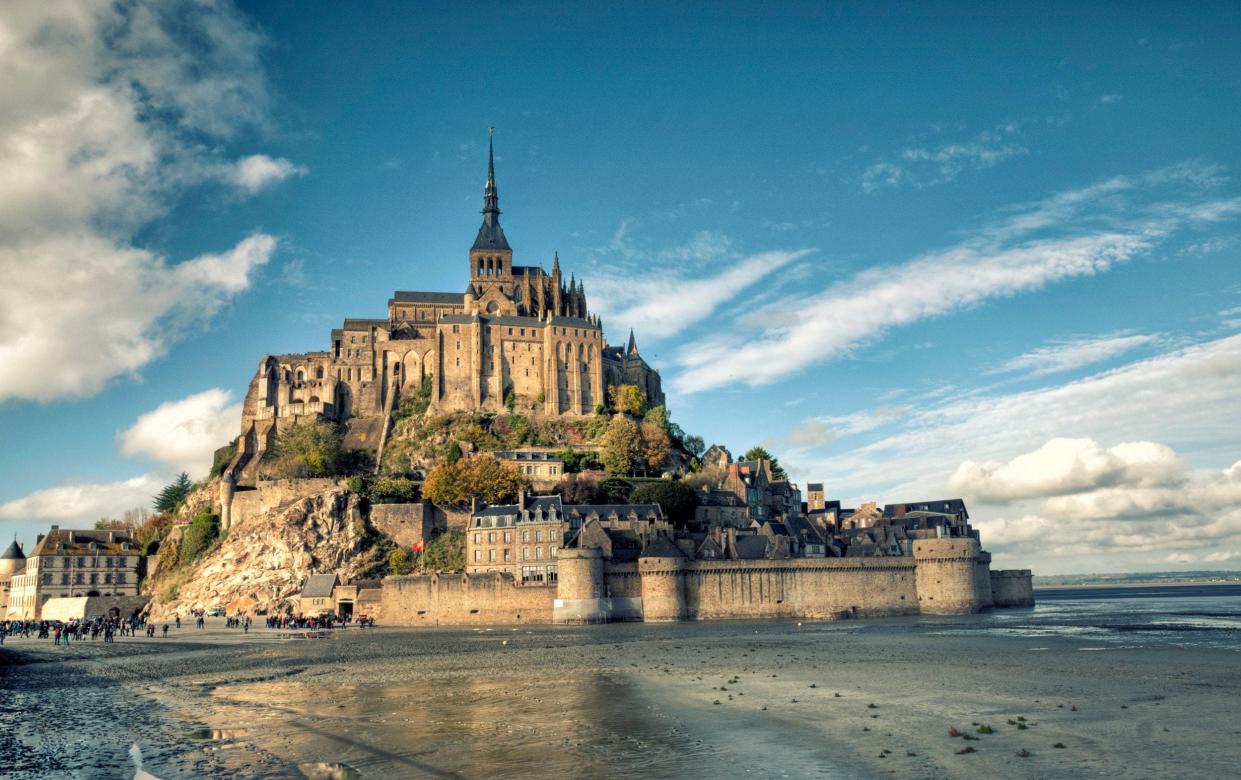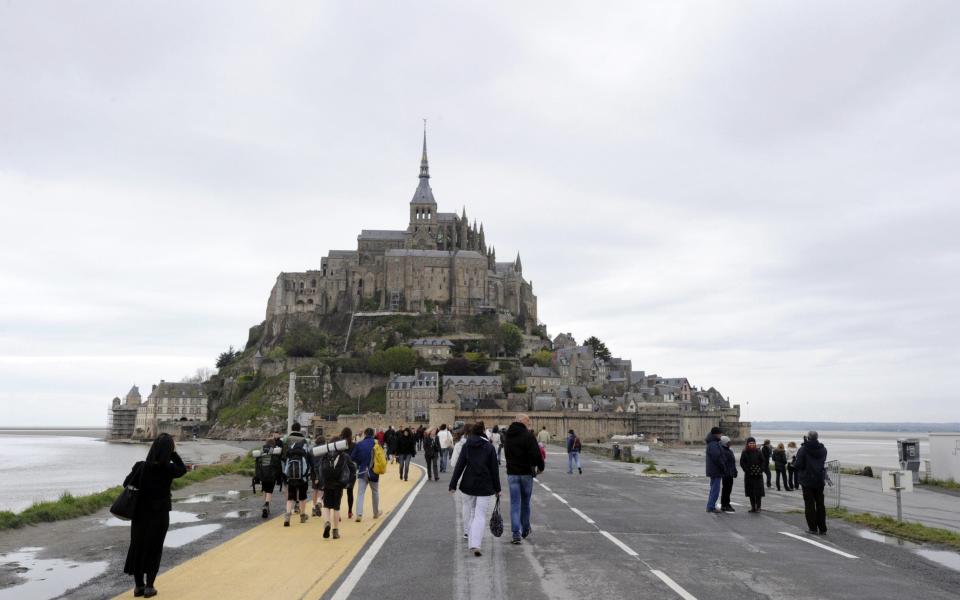Mont Saint Michel to be 'rebranded' in move away from overpriced omelettes and tourist tat

It withstood a 30-year siege by the English in the Hundred Years War and is now the most popular tourist attraction in France outside Paris and a Unesco World Heritage site.
For more than 1,000 years, Mont Saint-Michel’s fortified abbey has stood at the top of a granite pinnacle on a tidal island off the Normandy and Brittany coasts in northwestern France. Victor Hugo even once remarked: “Mont Saint-Michel is for France what the great Pyramid is for Egypt. It must be preserved from all mutilation.”
Yet the breathtaking site - population 17 but which attracts around 2.5 million people per year - is in serious need of “rebranding”, according to its new boss, amid complaints it has become a tacky tourist trap.
Thomas Veltier, 37, is the director of a new public body to run the landmark, took on the job with a €5million budget mid-Covid lockdown when the site briefly regained the magical silence of old.
His arrival follows two damning local council reports one of which lamented “a series of malfunctions and recurrent problems around the reception of tourists”, including the “overcrowded shuttle buses”, “roads regularly clogged with traffic” and “the low quality of shops, restaurants, museums and lodgings on offer that are frequently criticised.” It also slammed the site’s lack of information to visitors and unfriendly staff.
The head of another 2019 report to the French prime minister said the site had turned into a shameless “cash cow” fleecing “captive customers”.
Even its famed Mère Poulard restaurant, whose legendary omelettes have been tasted by everyone from Queen Victoria to Brigitte Macron, has been accused of charging extortionate prices for mediocre dishes.
Indeed, the Mont was singled out by multi-Michelin-starred super chefs Alain Ducasse and Guy Savoy in a recent report warning of slipping gastronomic standards in mid-range French restaurants, noting: “Rarely fresh and local, the dishes are not very tasty.”
“Our customers need a nice place to dine, it’s undeniable,” said Inès Lebrec, one of the Mont’s handful of inhabitants who runs La Tête Noire bed and breakfast along with her husband. To find a decent meal, “we are forced to send them 20 kilometres further”,” she told Le Figaro.
“The airplane needs a pilot”, remarked one official.

Since Mr Veltier’s arrival, vendors have been ordered to stop cluttering the narrow streets and keep most of their largely Chinese-made trinkets inside.
“Here, everything is complicated,” he said, confessing that local businesses, authorities and national heritage all had vested interests in the profitable site, making it very hard to ring any changes. After talks, “some have understood that overcrowding was ending up turning customers off,” he said, amid reports that the town may have to introduce tourist quotas.
Since the pandemic struck, many customers now book to enter the abbey, which receives 1.4 million people per year, and the plan is to keep the booking system in place.
Mr Veltier wants to reinvigorate the Mont by sprucing up the ramparts, which belong to the state, and turning a disused tower atop the rock into a “store and book shop with local products and crafts - a showcase for savoir-faire”.
He wants another building currently housing firemen to be turned into an upscale restaurant with “locally-sourced products” with a stunning view over the bay. Currently, all restaurants shut at 9pm.
The shuttle franchise will be changed in 2022 and bikes are now allowed to rode right into the fortress.
However, not everyone may approve of his plans to change the discreet lighting on the Mont by 2024. This month, the site was bathed in blue during an electro-music night intended to attract a younger crowd to the pilgrim spot.
“The abbey seemed to be floating in the skies,” claimed DJ Michael Canitrot.
Visiting last month, Roselyne Bachelot, the culture minister, confessed: “We have our collective work cut out to reach an ideal way of working.”
